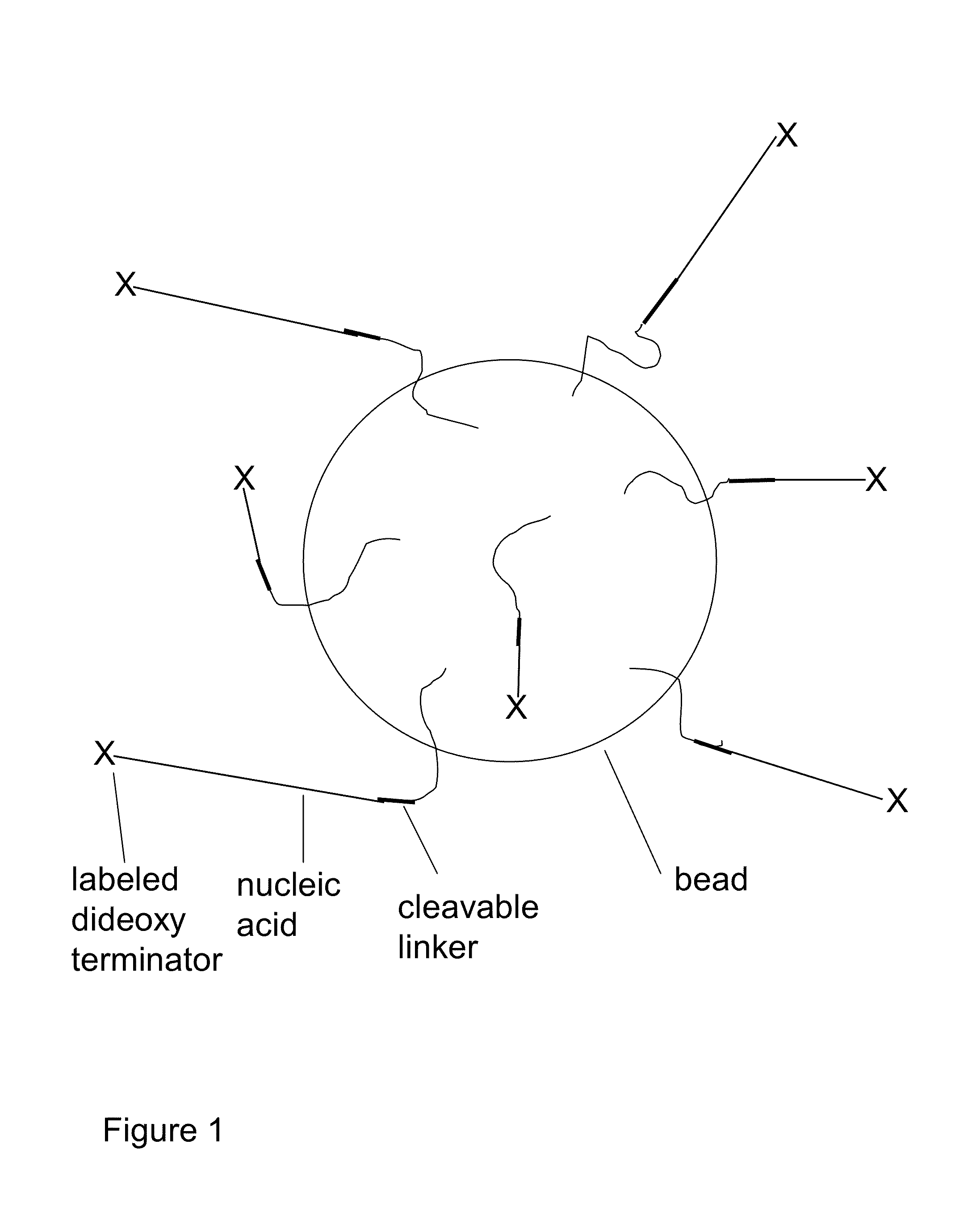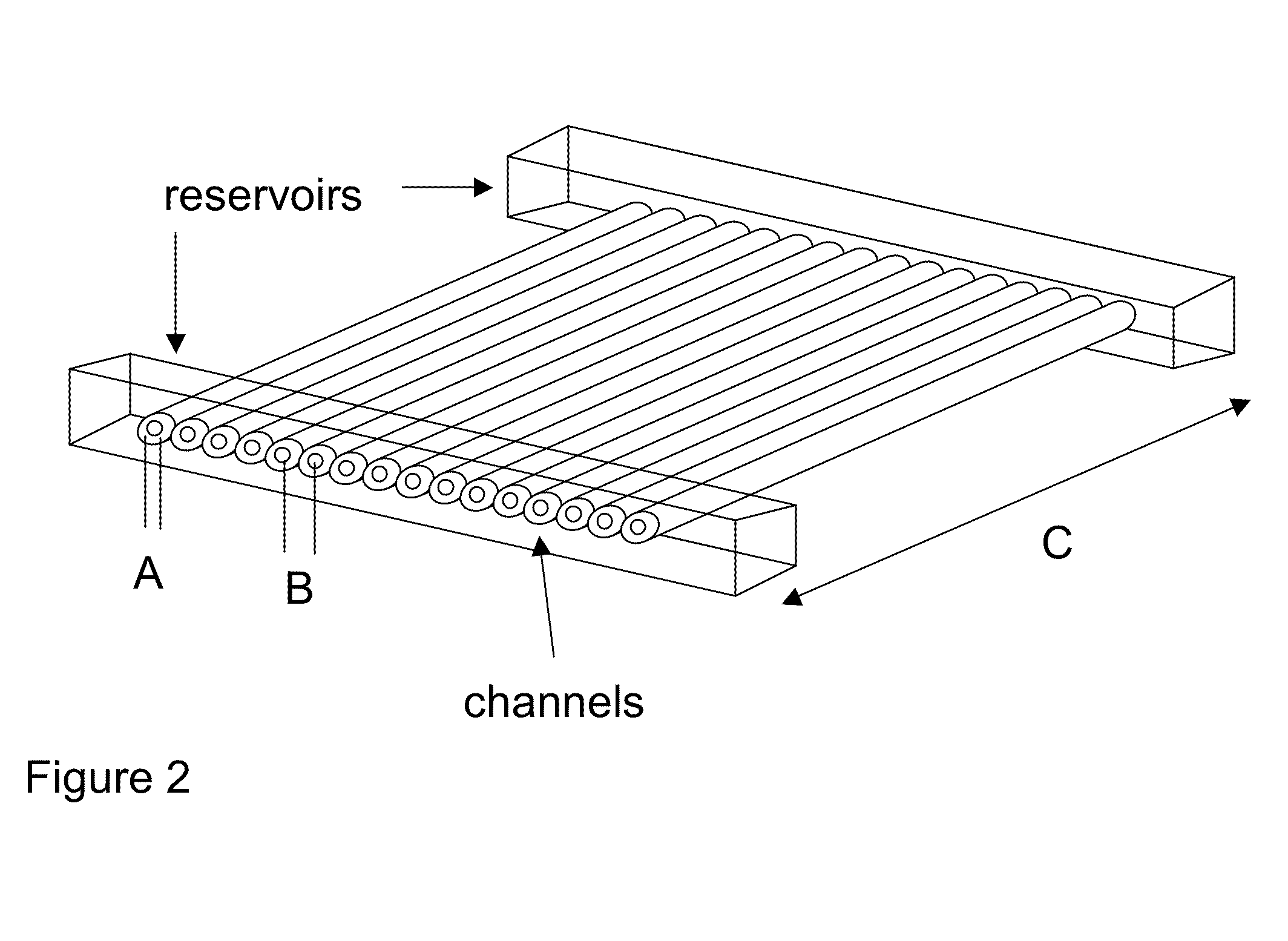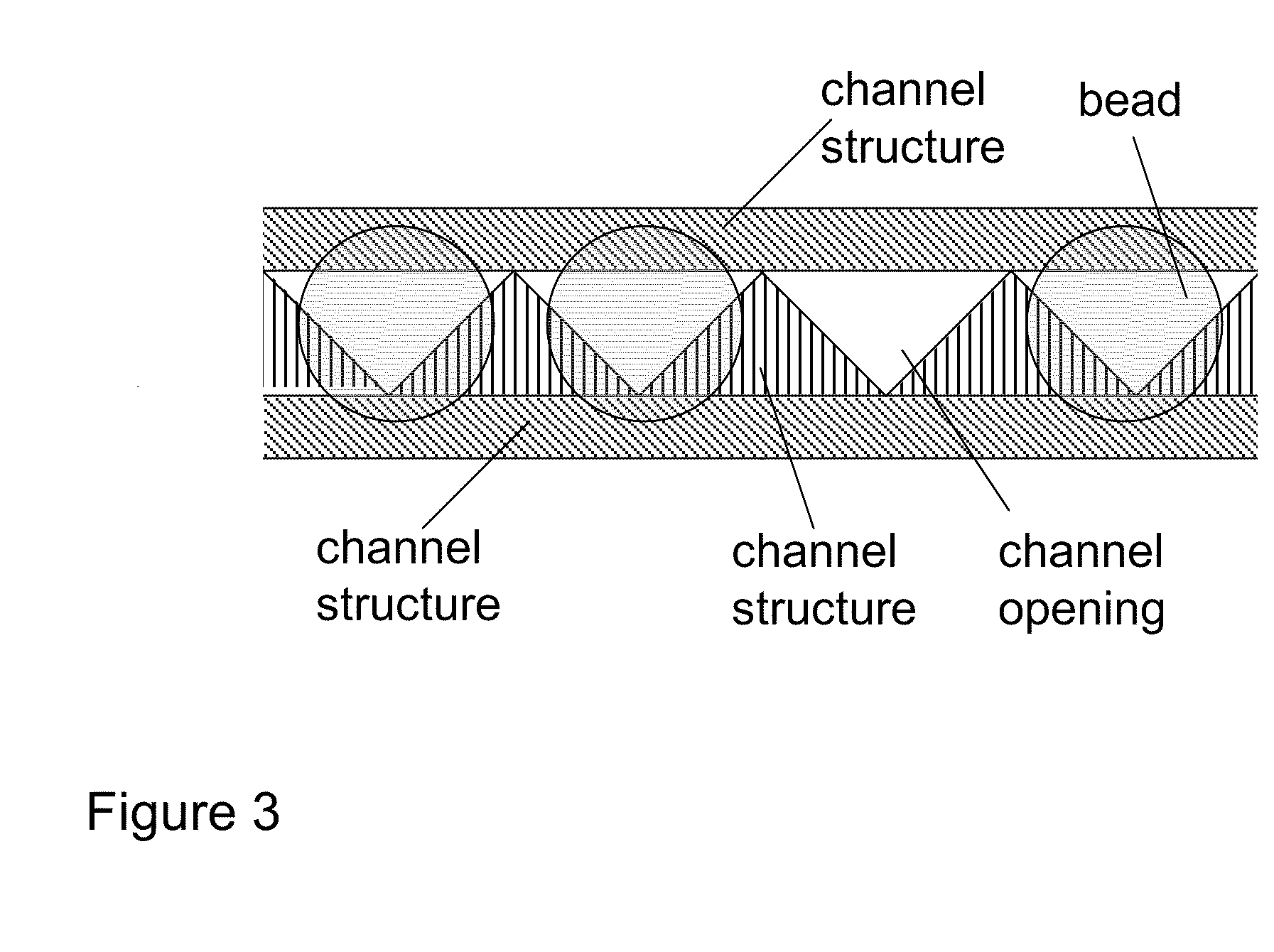Methods for sanger sequencing using particle associated clonal amplicons and highly parallel electrophoretic size-based separation
a particle-associated clonal amplicon and high-per-base electrophoretic technology, applied in the field of nucleic acid sequencing, can solve the problems of high cost, large amount of sample preparation required to sequence nucleic acids, and achieve high per-base cost of sequencing, reduce accuracy, and large amount of sample preparation
- Summary
- Abstract
- Description
- Claims
- Application Information
AI Technical Summary
Benefits of technology
Problems solved by technology
Method used
Image
Examples
example 1
[0047]The ability to align individual beads with channels was demonstrated using a model system. Quartz capillaries (6 cm long, 363 um OD, 20 um ID, Polymicro) were filled with 100 mM TBE buffer and each end was placed in a buffer reservoir. Agarose beads (25 um mean diameter, GE Healthcare) were flowed into the upstream reservoir. The capillary ends were imaged on a Nikon Diaphot 300 microscope and video collected on an LCL 903HS CCD camera (Watec America). As shown in FIG. 6, when an electric field (167 V / cm) was applied the beads were aligned with the channels. The electrophoretic force acting on the negatively charged beads forced the beads to stick on the top of each channel (but not squeeze into the channel) since the beads were slightly larger than the opening of the channel. Once one bead is associated with one channel, steric hindrance prevents another bead from being tightly captured by the same channel. A small hydrodynamic force (flow velocity <200 um / sec) orthogonal to ...
example 2
[0048]Preliminary studies to demonstrate the feasibility of releasing DNA fragments from beads and injecting them into channels were conducted. Small fluorescein and biotin labeled DNA oligos were bound to streptavidin coated glass beads (6 um diameter, Polysciences) in TBE buffer. After 30 minutes, the beads were washed to remove unbound oligos. The beads were loaded by gravity driven flow into a planar quartz microfluidic chip (AMS90 DNA chip, Caliper Life Sciences). An electric field (50 V / cm) was applied using an Agilent Bioanalyzer connected to the wells of the chip. The beads were driven from the deep (25 um) waste channel to the junction of the shallow (3 um) side channel resulting in the stacking of the beads at the entrance to the shallow channel. The fluorescein labeled oligos were imaged on a Nikon Diaphot 300 microscope (20× objective) with a mercury arc lamp using a fluorescein filter cube, and images were captured on an LCL 903HS CCD camera (Watec America). The bead / DN...
PUM
| Property | Measurement | Unit |
|---|---|---|
| time | aaaaa | aaaaa |
| time | aaaaa | aaaaa |
| length | aaaaa | aaaaa |
Abstract
Description
Claims
Application Information
 Login to View More
Login to View More - R&D
- Intellectual Property
- Life Sciences
- Materials
- Tech Scout
- Unparalleled Data Quality
- Higher Quality Content
- 60% Fewer Hallucinations
Browse by: Latest US Patents, China's latest patents, Technical Efficacy Thesaurus, Application Domain, Technology Topic, Popular Technical Reports.
© 2025 PatSnap. All rights reserved.Legal|Privacy policy|Modern Slavery Act Transparency Statement|Sitemap|About US| Contact US: help@patsnap.com



